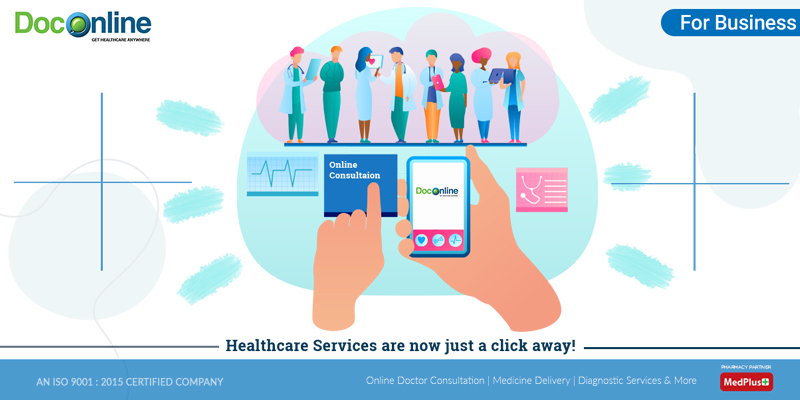Opening the Keys of Subscription Based Healthcare for Better Patient Outcomes
Opening the Keys of Subscription Based Healthcare for Better Patient Outcomes
Blog Article
Comprehending the Cost-Effectiveness of Subscription-Based Health Care Designs
As the healthcare landscape progresses, subscription-based versions emerge as an engaging option, guaranteeing to redefine exactly how people take care of clinical expenditures. Evaluating these designs' cost-effectiveness requires a nuanced contrast with conventional insurance policy, thinking about both financial implications and client satisfaction. While they supply openness and predictability in expenses, inquiries remain regarding their ability to meet varied health care demands, especially for specialized therapies. The viewpoints of healthcare carriers further complicate this formula, presenting a diverse obstacle. What does the future hold for these models, and can they really deliver on their guarantee of available, affordable care?
Introduction of Subscription-Based Designs
Subscription-based healthcare models, often referred to as straight medical care or attendant medication, are increasingly obtaining focus as a prospective service to ineffectiveness within typical medical care systems. These versions operate the principle of offering people straight accessibility to medical care suppliers with a month-to-month or yearly cost, bypassing the need for typical insurance mechanisms. This arrangement intends to streamline patient-provider interactions by decreasing administrative concerns, which frequently prevent personalized and prompt treatment.
At the core of subscription-based models is the emphasis on an extra individualized patient experience. Clients gain from boosted accessibility to their doctors, frequently including same-day or next-day appointments, extended assessment times, and straight communication networks such as phone or video clip telephone calls. This version promotes a positive technique to health care, where individuals and companies can collaboratively concentrate on preventative treatment and chronic condition administration.

Expense Comparison With Typical Insurance Policy

One of the primary economic benefits of membership models is transparency in expenses. Patients pay a predictable fee, which can simplify budgeting and economic preparation. Additionally, these models normally get rid of co-pays and deductibles for protected solutions, minimizing out-of-pocket costs. On the other hand, standard insurance coverage may be a lot more helpful for people needing specialized care or expensive treatments not covered under a membership design, as they take advantage of the broader coverage network and cost-sharing devices.
Nevertheless, cost-effectiveness is context-dependent. While subscription designs might offer cost savings for those mainly needing main care, people with persistent problems or specialized medical care requirements might find conventional insurance coverage extra extensive. Consequently, assessing certain medical care demands and possible usage is critical in determining one of the most affordable choice for people.
Effect On Person Contentment
Individual fulfillment within subscription-based health care designs commonly mirrors a considerable renovation over typical insurance policy systems. This enhancement is mostly credited to the personalized care and ease of access these versions supply. Individuals often report higher complete satisfaction because of lowered delay times and the convenience of scheduling visits. Unlike standard systems, where patients could experience hold-ups in receiving treatment, subscription-based versions make additional resources sure even more straight and timely interactions with healthcare carriers.
Furthermore, the transparency in costs connected with subscription-based medical care eases the typical disappointments associated with unexpected fees and complex billing processes seen in typical insurance coverage (subscription based healthcare). Clients value recognizing the precise monetary dedication upfront, causing raised trust and self-confidence in their health care monitoring
Furthermore, the emphasis on preventative care and health in membership versions adds to improved health and wellness outcomes, additionally enhancing person fulfillment. By concentrating on recurring wellness upkeep as opposed to episodic treatment, patients experience a more holistic and continuous health care trip.
Moreover, the improved provider-patient relationship promoted in these versions, identified by more time spent per person and customized attention, plays an important role in elevating patient contentment levels, as individuals feel truly taken care of and recognized.
Supplier Experiences and perspectives
From the supplier's viewpoint, subscription-based health care models offer a transformative technique to supplying medical services. These versions highlight a positive and preventative healthcare method, permitting companies to concentrate on extensive individual treatment without the restraints of traditional fee-for-service plans (subscription based healthcare). This shift in focus usually leads to enhanced individual end results and enhanced company fulfillment, as medical care specialists can designate more time and sources to client interaction and customized care plans
Moreover, registration versions facilitate foreseeable income streams, which improve financial security for healthcare companies. This predictability permits improved resource preparation and allotment, adding to a much more efficient healthcare shipment system. Carriers can invest in staff framework, training, and innovation enhancements, thereby improving the top quality of care supplied.
Nonetheless, the change to subscription-based versions is not without difficulties. Providers must adjust to brand-new operational frameworks, which can involve considerable modifications in payment methods and individual administration systems. Additionally, there is an inherent requirement for durable data management to track individual results and guarantee high quality care. Regardless of these obstacles, numerous suppliers discover that the benefits of raised individual communication and streamlined procedures outweigh the preliminary challenges, making subscription-based versions an appealing option.
Future Prospects and Difficulties

A main challenge is regulatory conformity, as membership models must follow progressing health care policies and insurance policy needs. This requires constant adaptation and technology to make sure positioning with lawful criteria. In addition, integrating these models into existing health care infrastructures can be intricate, needing significant investments in innovation and training.
There is likewise the possible risk of developing injustices in medical care accessibility, as subscription models might prefer those who can afford them, leaving prone populations underserved. Resolving this needs thoughtful factor to consider of prices techniques and subsidy mechanisms to guarantee inclusivity.
Conclusion
Subscription-based medical care models present a viable this hyperlink alternative to conventional insurance by supplying monetary predictability and transparency, specifically benefiting people with chronic conditions or regular medical care needs. The cost-effectiveness of these models is contingent upon specific healthcare use patterns and conditions.
Subscription-based health care designs, occasionally referred to as direct main treatment or concierge medicine, are significantly getting interest as a potential option to inadequacies within typical health care systems. Unlike traditional systems, where clients may experience hold-ups in getting treatment, subscription-based designs make certain more prompt and straight interactions with healthcare companies.
These designs emphasize a proactive and preventative health care method, permitting carriers to focus on extensive patient care without the constraints of conventional fee-for-service plans. As these models proceed to get traction, they offer the potential to reinvent person access to care, simplify service distribution, and maximize medical care spending.Subscription-based healthcare designs provide a feasible choice to standard insurance coverage by using economic predictability and openness, especially profiting people with chronic conditions or constant health care needs.
Report this page